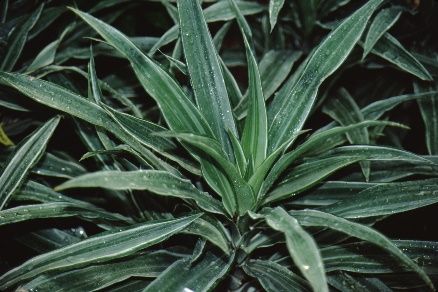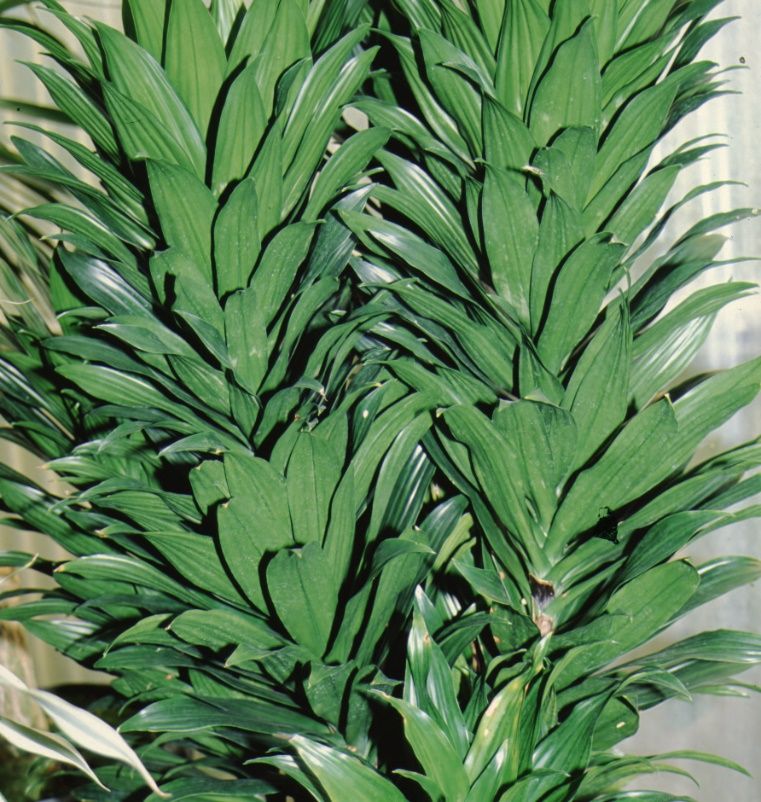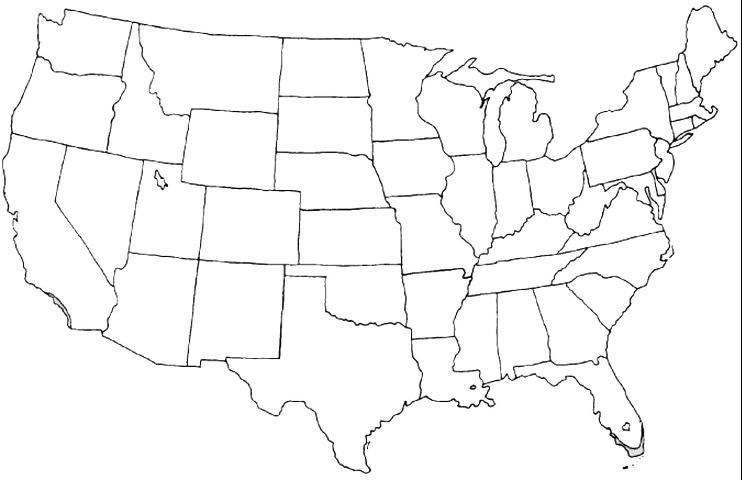Introduction
The upright, multiple, unbranched stems of dracaena, with rosettes of arching, broad evergreen leaves, form a heavy but graceful tropical clump, suitable for low-maintenance container culture or specimen planting in the shaded landscape. Leaf color ranges from green to grey-green with various white striped patterns available. The white striped and variegated cultivars can brighten a shaded yard or dark corner.

Credit: Edward F. Gilman, UF/IFAS

Credit: Edward F. Gilman, UF/IFAS
General Information
Scientific name: Dracaena deremensis
Pronunciation: druh-SEE-nuh dair-rem-MEN-sis
Common name(s): dracaena
Family: Agavaceae
Plant type: shrub
USDA hardiness zones: 10B through 11 (Figure 3)
Planting month for zone 10 and 11: year round
Origin: not native to North America
Invasive potential: not known to be invasive
Uses: specimen; container or above-ground planter; border; suitable for growing indoors
Availability: generally available in many areas within its hardiness range

Credit:
Description
Height: 8 to 12 feet
Spread: 2 to 5 feet
Plant habit: upright
Plant density: open
Growth rate: moderate
Texture: coarse
Foliage
Leaf arrangement: spiral
Leaf type: simple
Leaf margin: undulate
Leaf shape: linear
Leaf venation: parallel
Leaf type and persistence: evergreen
Leaf blade length: 8 to 12 inches
Leaf color: variegated
Fall color: no fall color change
Fall characteristic: not showy
Flower
Flower color: yellow
Flower characteristic: flowers periodically throughout the year
Fruit
Fruit shape: round
Fruit length: less than .5 inch
Fruit cover: fleshy
Fruit color: red
Fruit characteristic: inconspicuous and not showy
Trunk and Branches
Trunk/bark/branches: showy; typically multi-trunked or clumping stems
Current year stem/twig color: green
Current year stem/twig thickness: very thick
Culture
Light requirement: plant grows in the shade
Soil tolerances: slightly alkaline; clay; sand; acidic; occasionally wet; loam
Drought tolerance: moderate
Soil salt tolerances: poor
Plant spacing: 24 to 36 inches
Other
Roots: usually not a problem
Winter interest: no special winter interest
Outstanding plant: not particularly outstanding
Pest resistance: long-term health usually not affected by pests
Use and Management
Dracaena looks best in shade and is tolerant of drought and a wide variety of soil types, though preferring an organic soil. Plant on one to two-foot centers in a mass planting. Shade tolerance makes this a good house plant.
The cultivar 'Warneckii' has a broad stripe along each margin and is commonly available.
Propagation is by tip cuttings.
Pests and Diseases
Mites, thrips, and chewing insects are a problem.
Dracaenas are sensitive to leaf spot diseases.